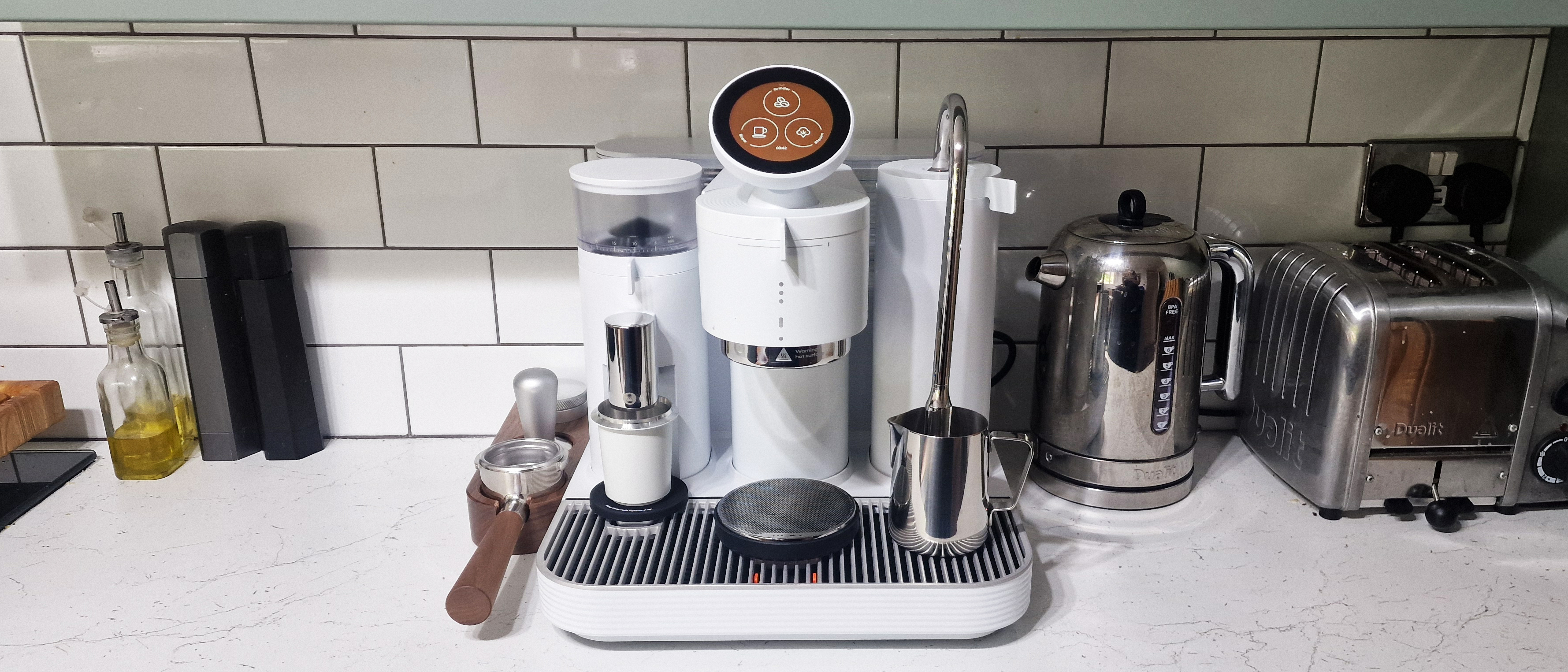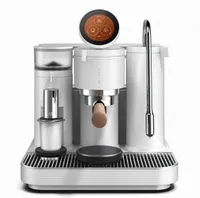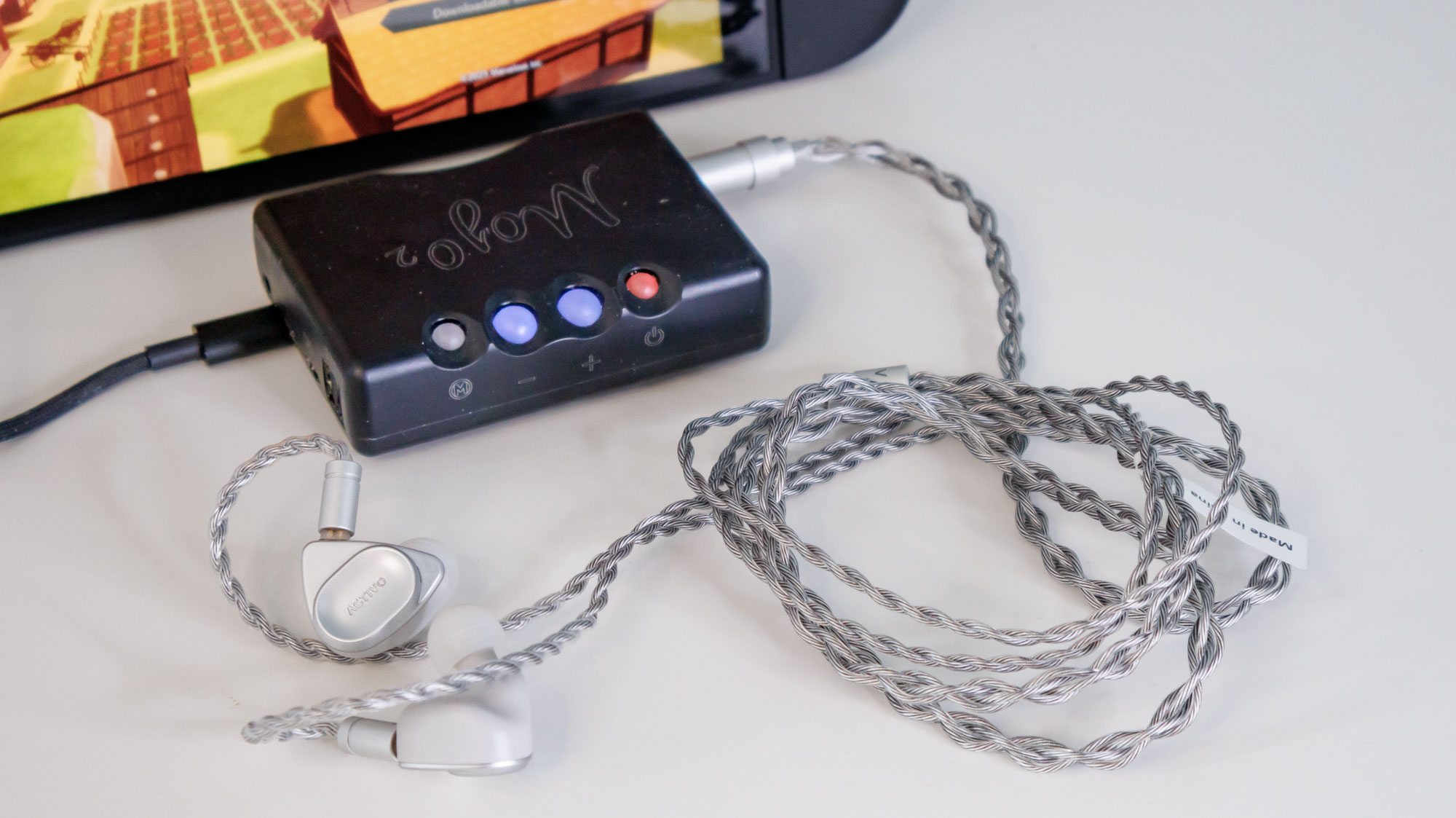Tom's Guide Verdict
The Meraki can be messy and high-maintenance, but it's so, so worth it. Everything about the design of this machine makes you feel like you're using a commercial-grade brewer, from its its capable grinder to its insanely powerful steam wand. If you're thinking of taking a step up in your home brewing, look no further.
Pros
- +
Incredible value
- +
Next-level steaming power
- +
Looks the part
- +
Dual boiler design
- +
In-built scales
- +
Outstanding TimeMore grinder
- +
Mix of manual and guided steps
- +
High-quality included accessories
Cons
- -
It can get messy
- -
No water filter included
- -
Tricky to clean
Why you can trust Tom's Guide
The Meraki is an espresso machine like no other. Offering a dual-boiler design, weighted grinding and brewing with in-built scales and a powerful steam wand with an integrated thermometer, I can see why it hit 1.5 million on Kickstarter when it first launched last year. But at $1,999 (currently down to $1,799 at Meraki), you get an awful lot of machine for under $2,000. Is it too good to be true?
I put the Meraki to the test for three months in my own kitchen to see if it can rival the big players like Breville and De'Longhi. And while there are a couple of areas where I think it could use finessing, I've been incredibly impressed by this machine so far.
Here's my verdict.
Meraki espresso machine: Specs
Price | $1,999 |
Size | 14.5 x 14.5 x 16.3 inches |
Weight | 14.5kg |
Grind settings | 30, stepless |
Drink options | Manual: espresso, hot water dispenser, steam wand |
Capacity | 125g of beans |
Material | Brushed Stainless Steel |
Water tank | 67 fl. oz. |
Meraki espresso machine: Price & availability
Now hear me out: I know $1,999 is far from affordable. But, if you're looking for a high-spec machine, you'll struggle to find one that can do what the Meraki does for under $2,000. And if you do, it's unlikely to be a dual boiler machine.
It comes in two colors: Black or White. With hindsight, I wish I'd picked the Black colorway when given the option, as the White shows any little splash or rogue coffee grounds far more easily.
Right now, you can buy it directly from Meraki, and it's on sale at the time of writing for $1,699. For context, Breville's Dual Boiler machine is $1,599, but doesn't have a grinder or offer weighted dosing.
The Meraki Espresso Machine is currently $400 off for both the black and the white models. It has a built-in grinder, scale, adjustable steam wand, and double boiler.
Meraki espresso machine: Design
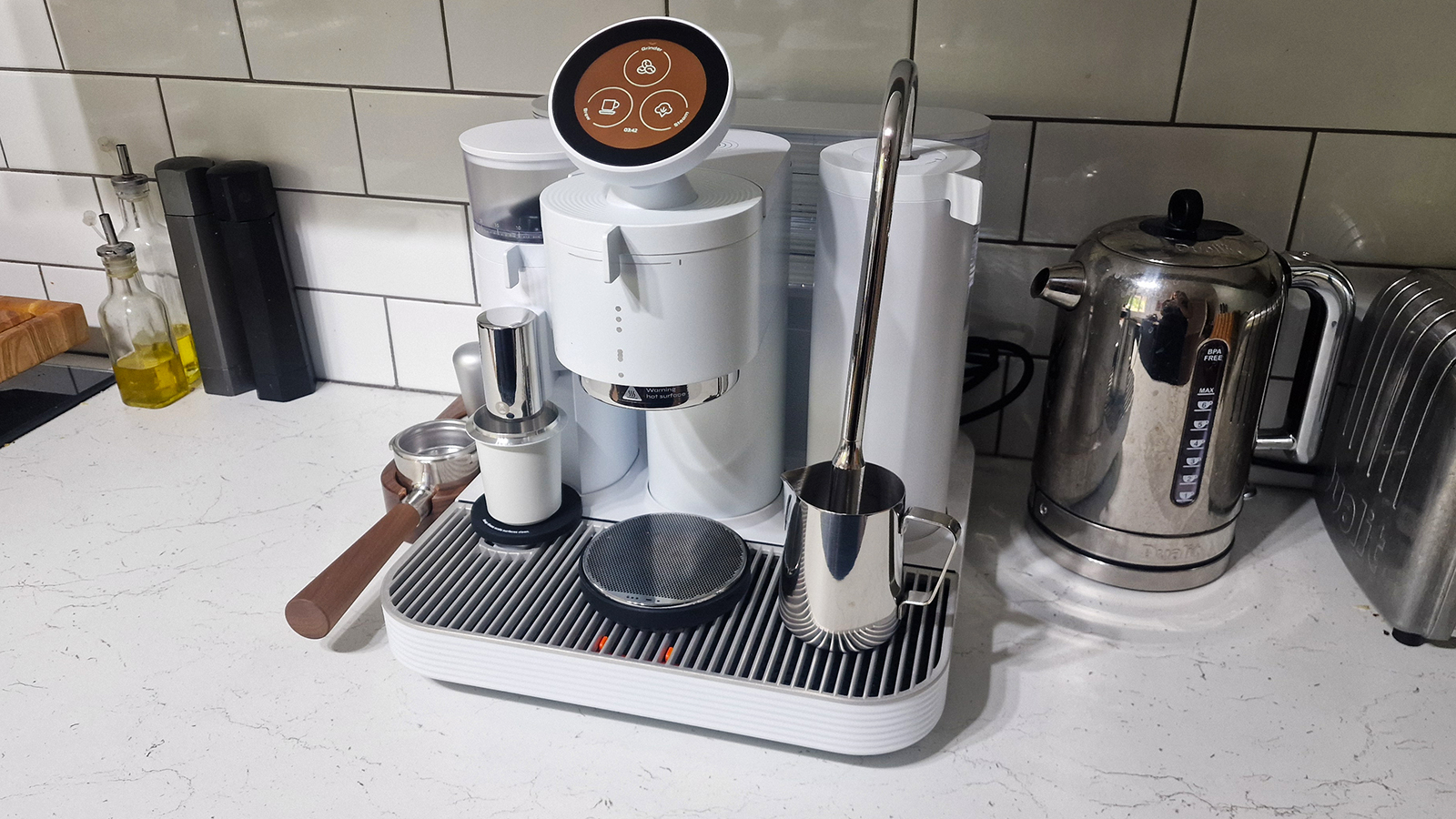
Here's what's on offer with this setup: a PID dual boiler system, rotary pump, built-in scales for both grinding and espresso, built-in milk temperature sensor and heat-safe steam wand, and a TimeMore grinder. You'll pay $599 for a TimeMore standalone electric grinder, so that's a pretty good deal.
Get instant access to breaking news, the hottest reviews, great deals and helpful tips.
The touchscreen on this machine is activated by an 'On' button behind it. It also has a CoffeeSense NFC scanner behind the screen, which (when you buy compatible beans) will suggest brewing ratios and grind sizes for your machine. I didn't get to test this setting, but it's a clever feature and one that's likely to become more popular in future, given the increasing collaborations between brands like Fellow and xBloom with specialist roasters.
You get a separate wooden container which houses your tamper, distributor and 58mm bottomless portafilter, when not in use. There's an attachable spout which slots into the base of the portafilter, which I found myself using most of the time.
Meraki espresso machine: Performance
Grinder
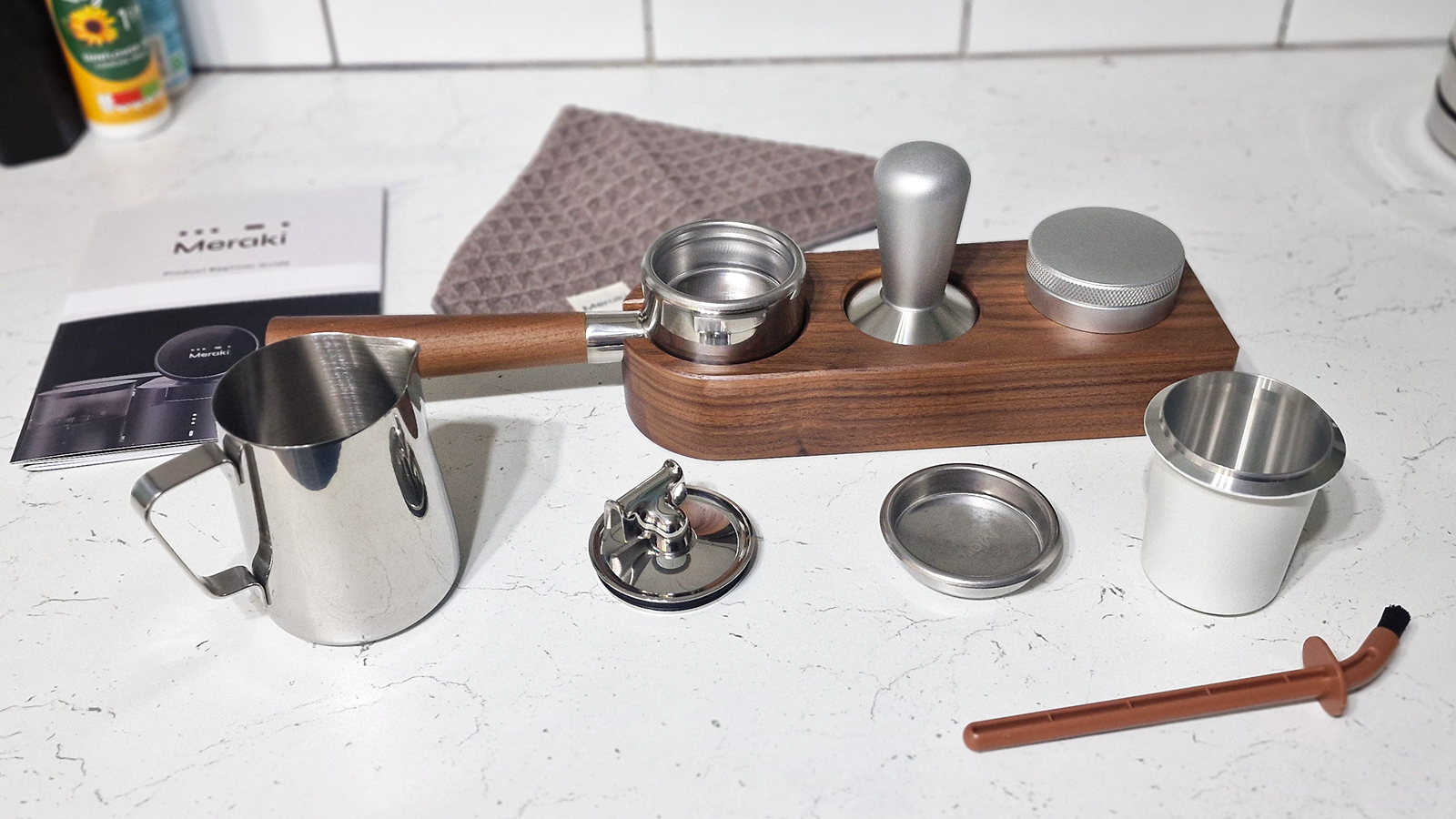
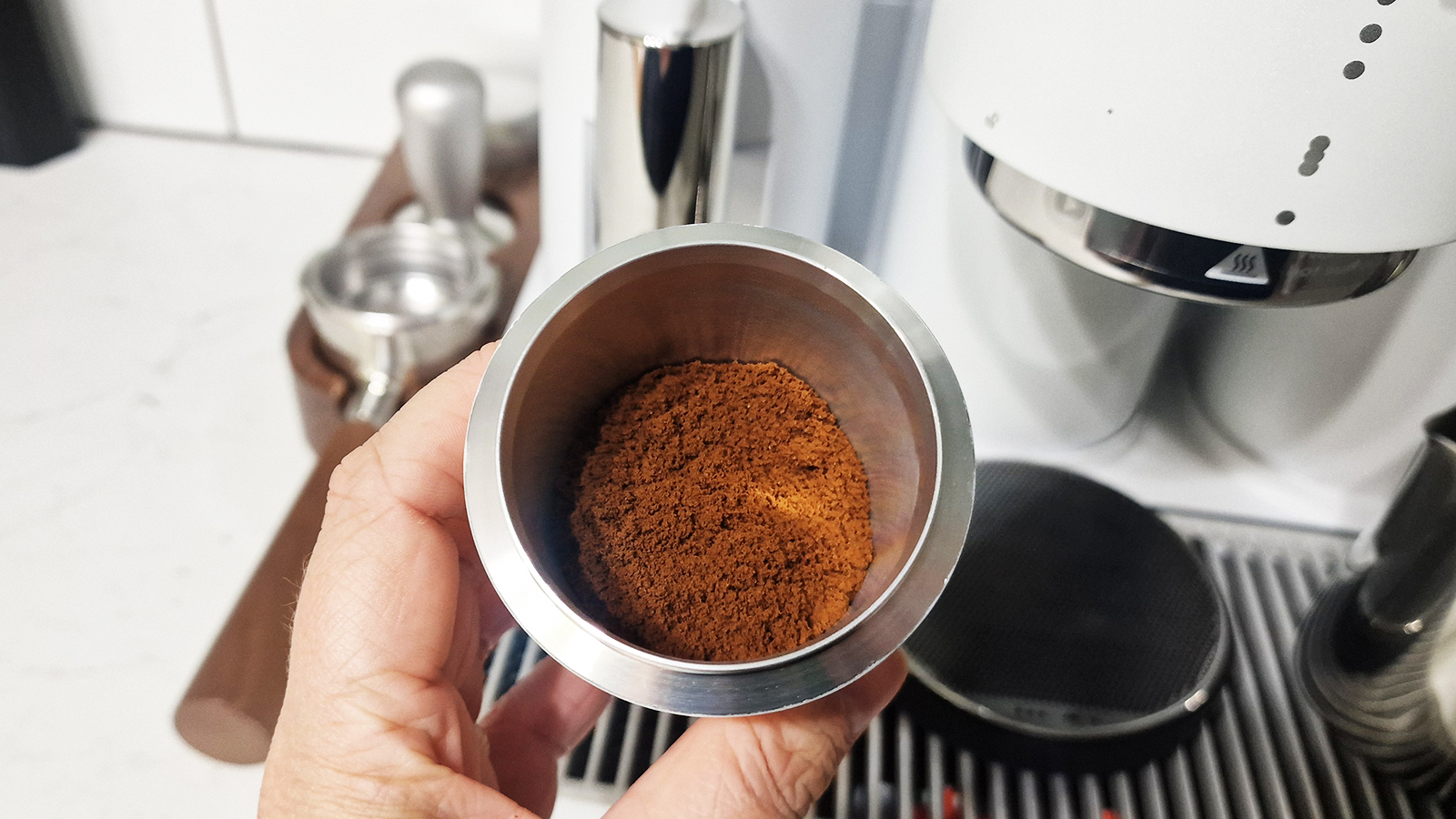
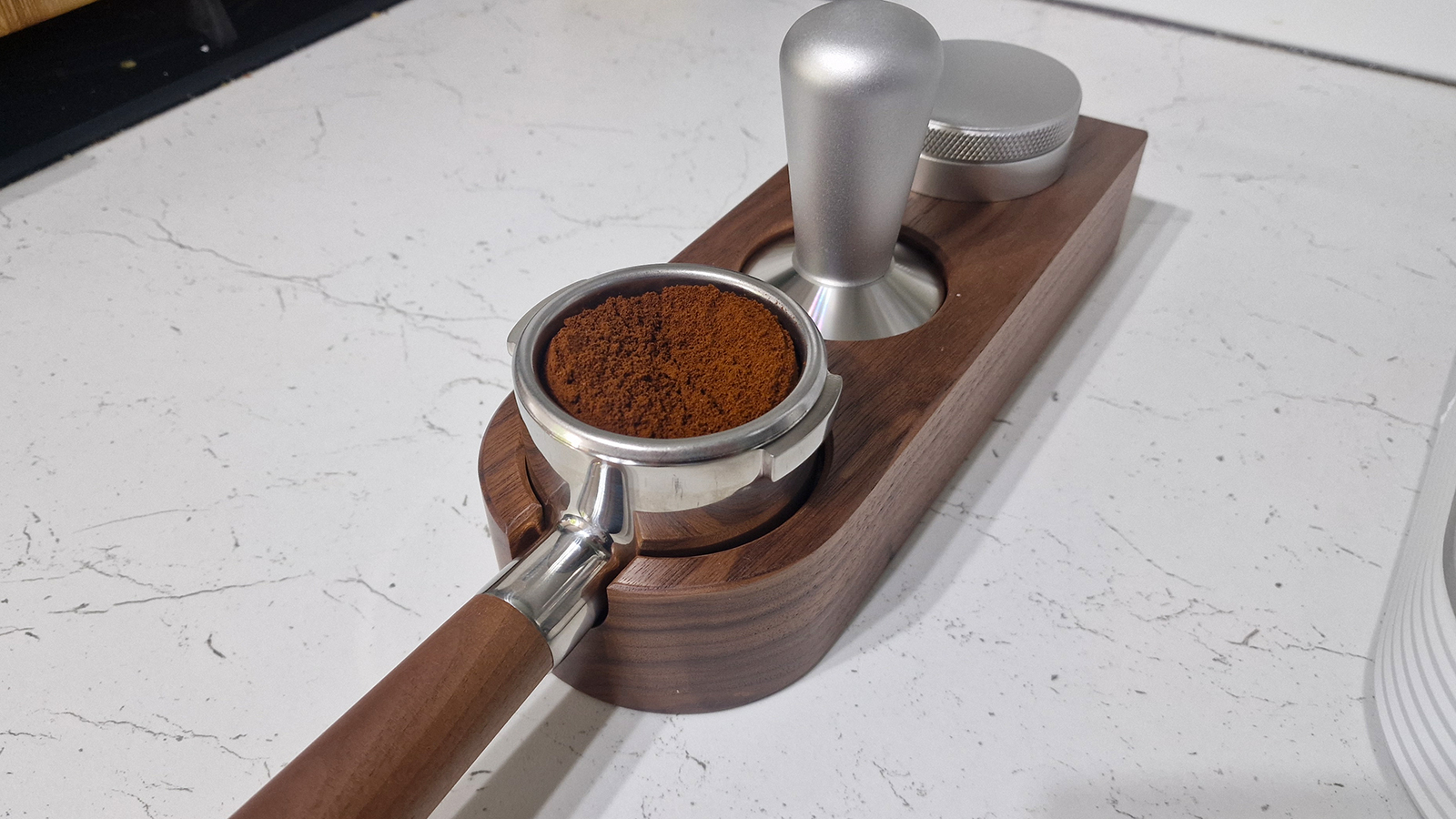
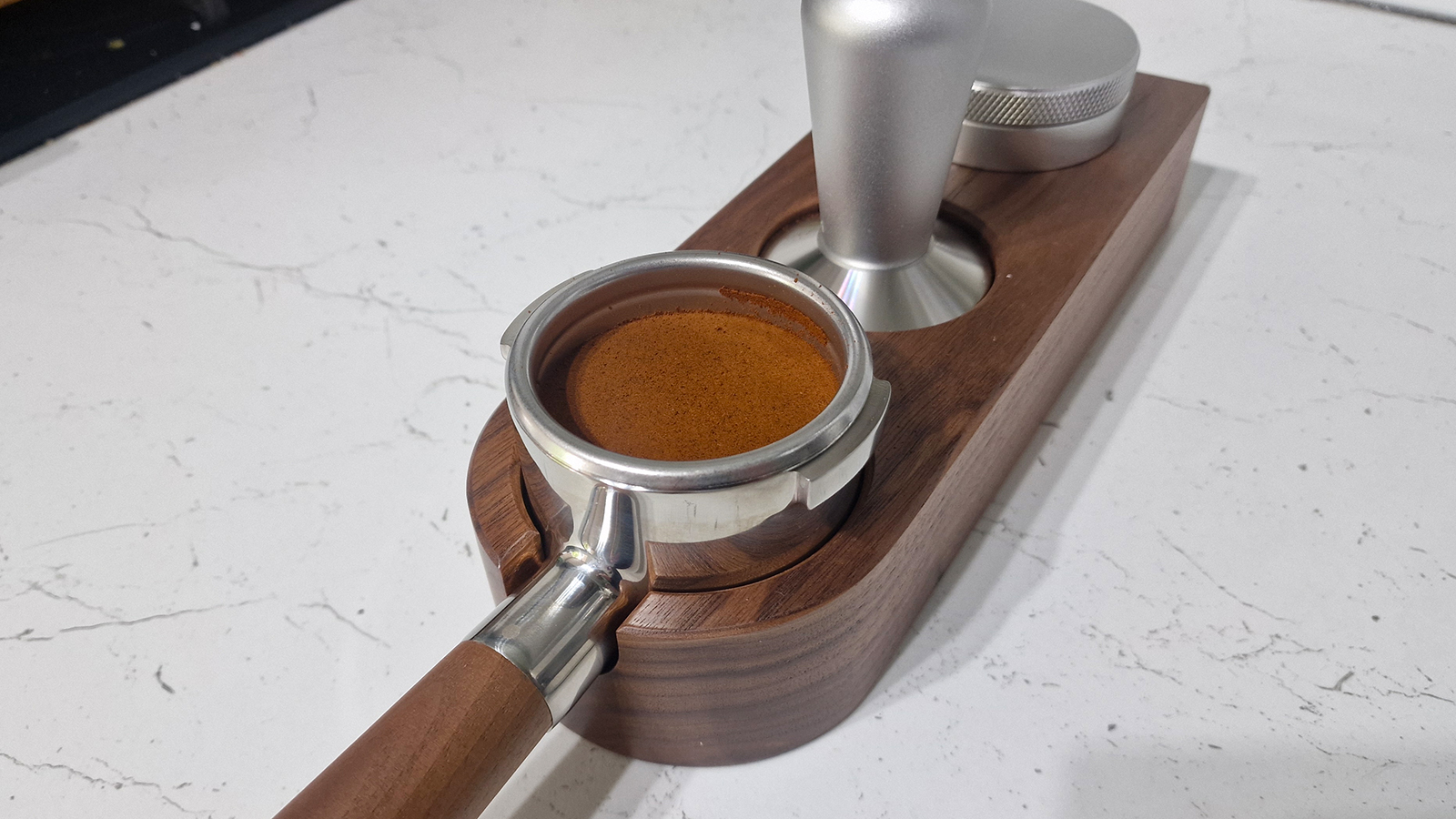
As I mentioned earlier, the grinder in the Meraki espresso machine was co-engineered with TimeMore, which is a quality grinder brand that'll set you back around $600 for a standalone model. So to get one included with this $2,000 machine is pretty good value.
With stepless grinding (and 30 levels marked on the bean hopper), and a thermally isolated design, this grinder has served me well over the last few months. It's very responsive to small tweaks, and I've used it from the 10-step mark right up to 25 for darker roasts. It can handle a wide range of beans, and I'm pleased that I've never had to go below 10, meaning it could go even finer than you're likely to need for good espresso.
The grinder is quiet, low in static, and I've found that it offers minimal clumping. You control it by weight on the control panel, which allows you to tailor your grind down to the tenth of a gram.
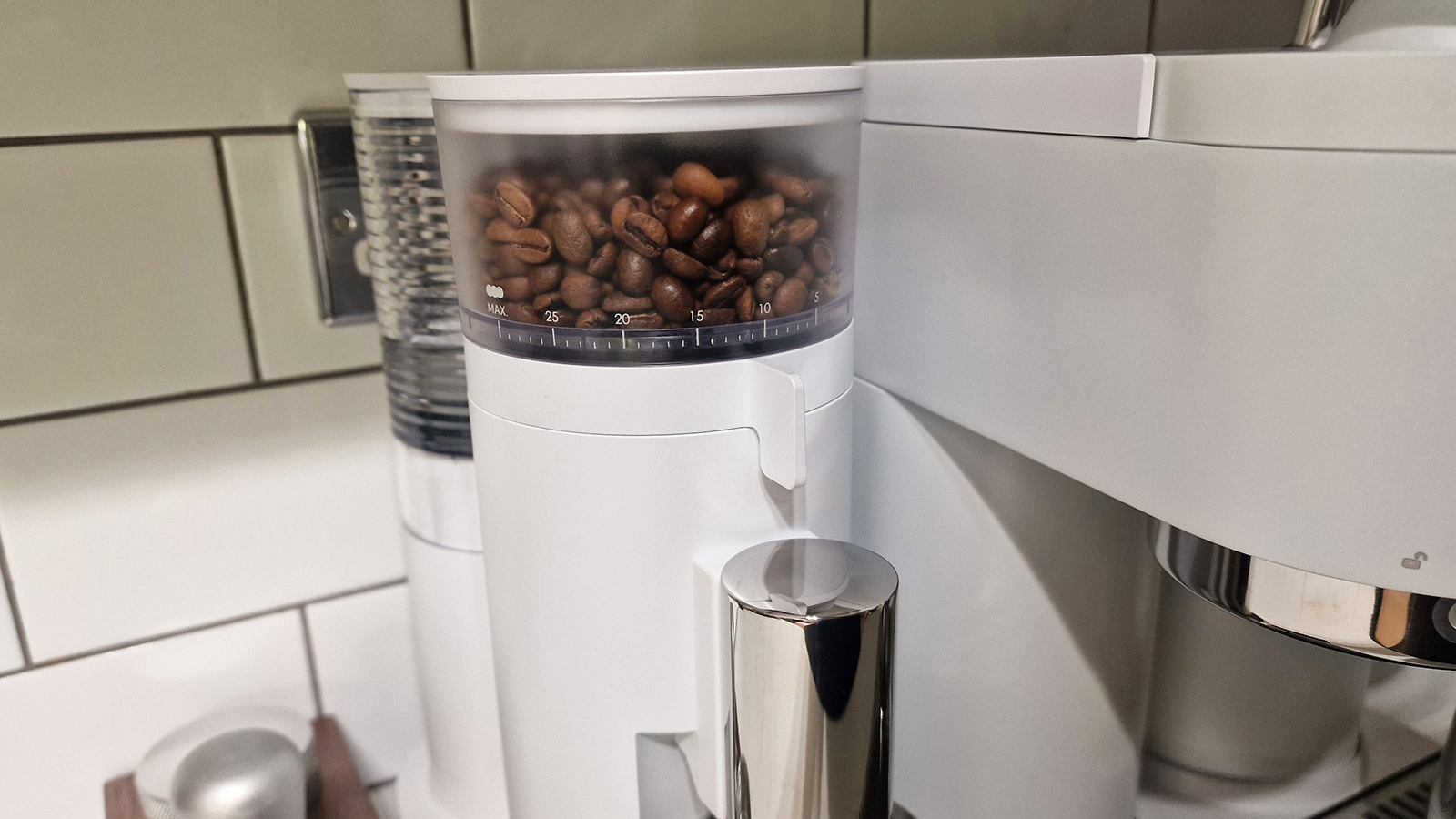
You grind directly into a magnetic dosing cup, which fits perfectly into the 58mm portafilter. Then, you can rest your portafilter in the wooden stand and use the distributor to ensure it's evenly, well, distributed in your portafilter. Finally, it's time to use the tamper, which feels remarkably high-quality and weighty.
The only thing I'd consider adding to the lineup is a WDT tool, but given how minimal the clumping is, I'm not sure I need it. Overall, the Meraki gets an A+ for its grinder.
Espresso
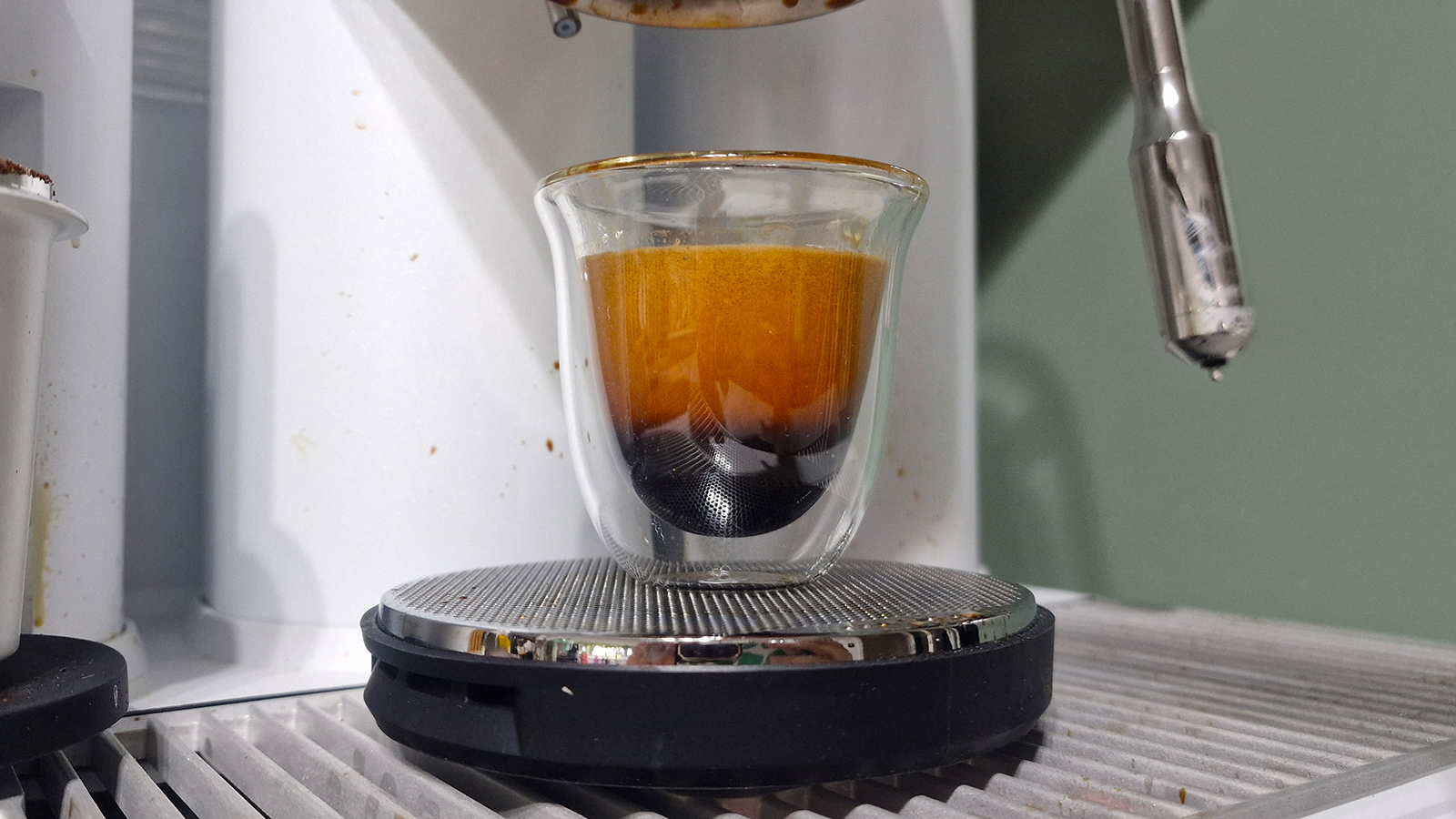
I think you can see from the photo above just how good the espresso I made in this machine was. Using fresh-roasted beans from one of my favorite coffee brands, Redemption Roasters, I first made a deep and chocolatey espresso with the Meraki.
You can choose your desired shot size by weight on the display panel. I opted for 36 grams to begin with; a classic 1:2 ratio with my 18 grams of grounds, but when making Americano, I would often toggle up to making 54 grams (a lungo) to create a stronger flavor.
With most major coffee makers, your shot size is determined by volume, but enthuaists will use one of the best coffee scales and manually monitor the brew time and weight. With the Meraki, you don't need to. It tracks brew time on the display, alongside weight, using the scale beneath the group head on which your mug rests.
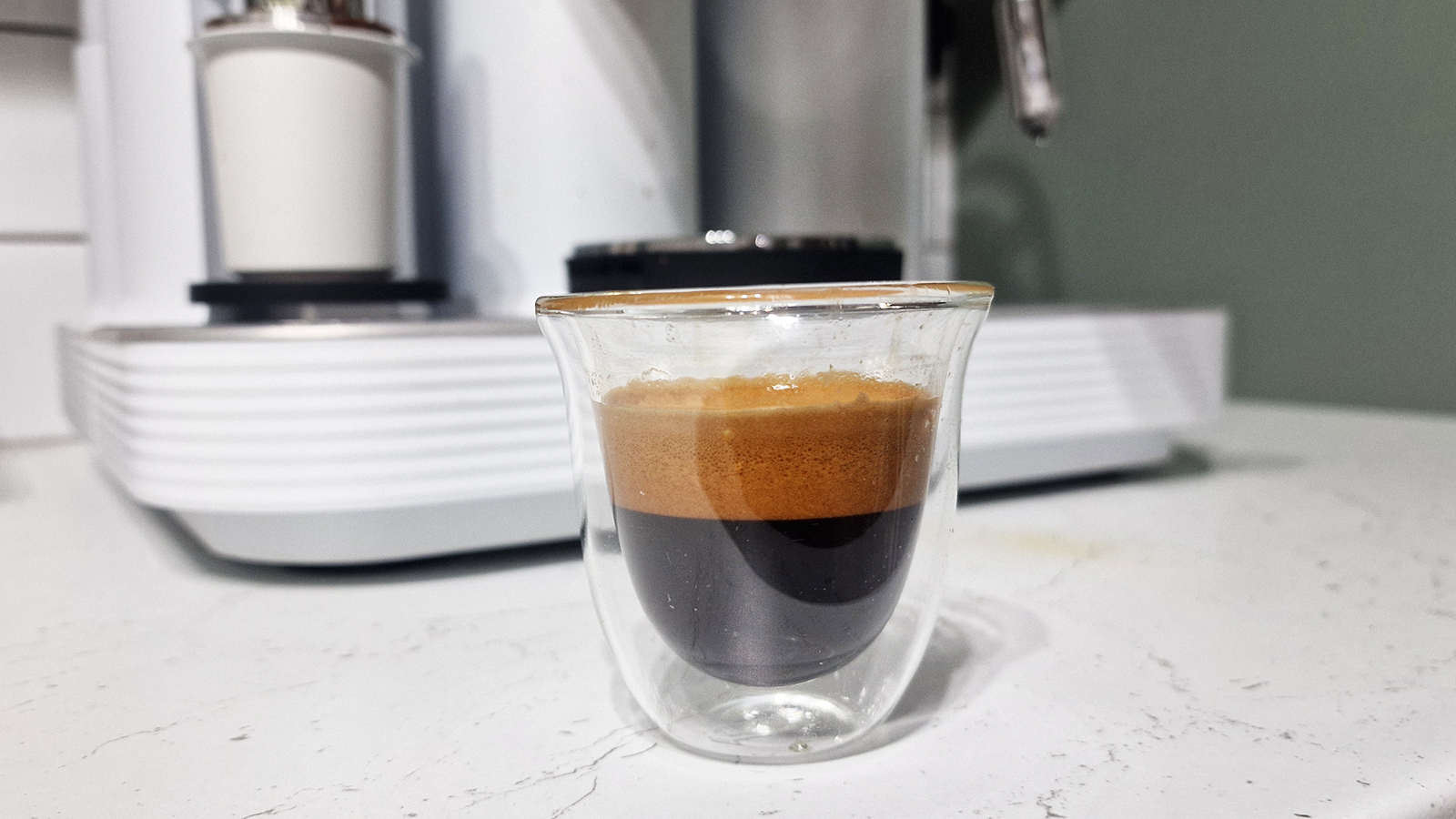
This was my first time making coffee with a bottomless portafilter, and it's a really enjoyable experience. You can buy a mirror to show you the portafilter in action, but I just watched the old-fashioned way (by crouching down and sticking my head next to my coffee cup).
The major downside of using the bottomless portafilter is how splashy it gets. I found myself wiping down specks of coffee from behind and in front of my coffee maker whenever I made a sub-optimal shot. Which, because I use small batch roasted beans and need to dial in fairly often, is quite a lot.
Because of this, I've been using the attachable spout that slots onto the base of the portafilter to brew my espresso quite often. This also has the added benefit of working for double shots of coffee.
When making Americano, there is also a hot water dispenser which sits behind the portafilter and is angled perfectly to top up your coffee. I find myself using this most days, but if you like long drinks, you should keep in mind the low clearance of this machine. I've occasionally used a mug to brew a drink before pouring into a larger vessel like a travel coffee cup.
Milk-based drinks
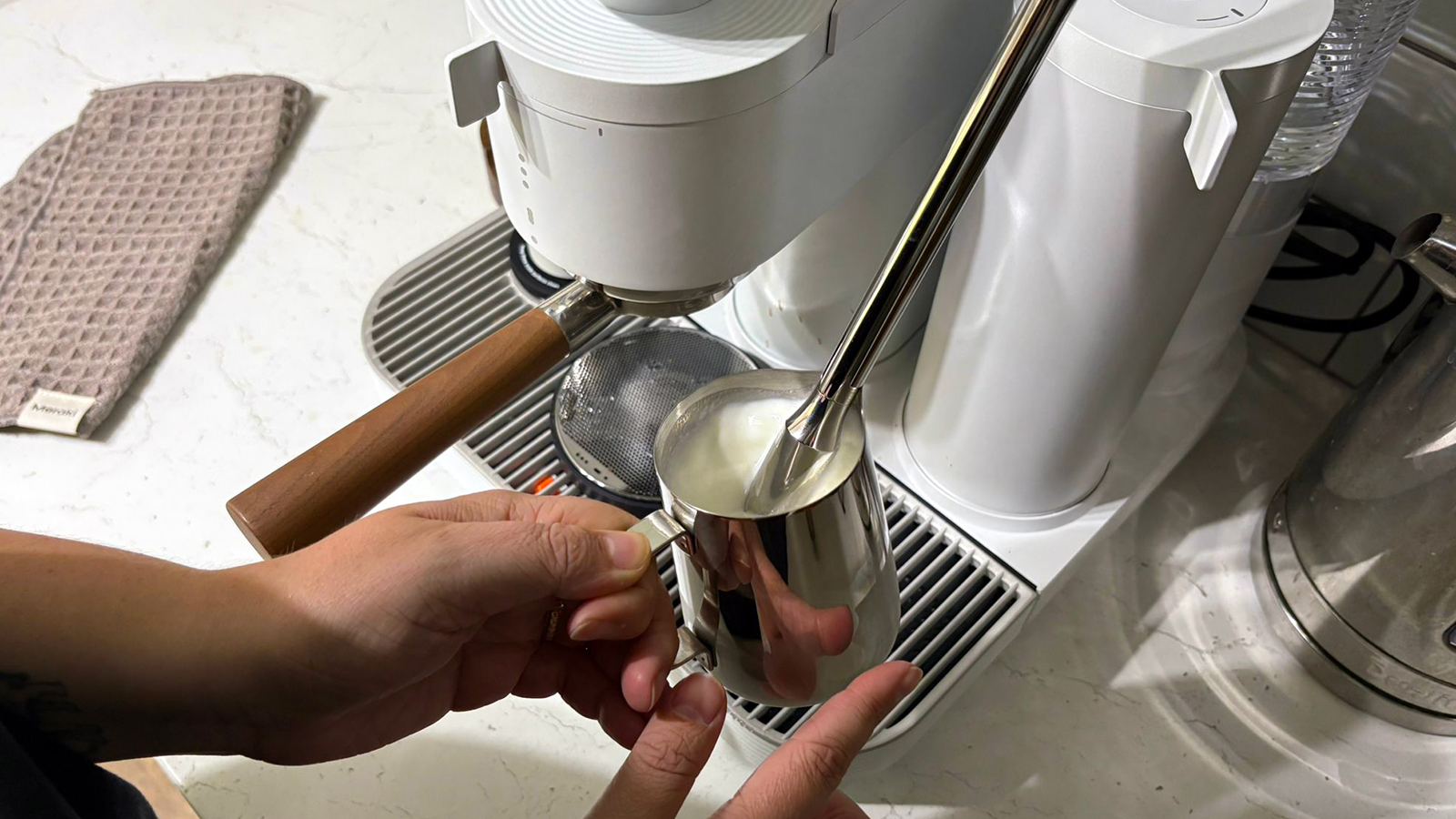
The Meraki's Dual Boiler design means you can steam milk and brew espresso simultaneously, which is great for your workflow. However, because there's only one screen, I found myself waiting the 30 seconds or so required for my espresso to brew before switching over to steaming using the display.
To manually activate it, there's a sliding lever on the side of the wand, but with the touchscreen display, you can adjust strength and intended temperature. When you hit that temperature, your wand stops steaming automatically, which means you'll never burn your milk.
This steam wand is strong. At full steam, it's capable of bringing your milk up to temperature in under ten seconds. But I'm not the most skilled at steaming milk with such a powerful wand, especially since I'm used to domestic machines and my only experience with commercial-standard wands was during my barista training. Fortunately, you can change the steam level. I've been using Medium since I realized this, and it buys me time to get my milk to that perfect texture.
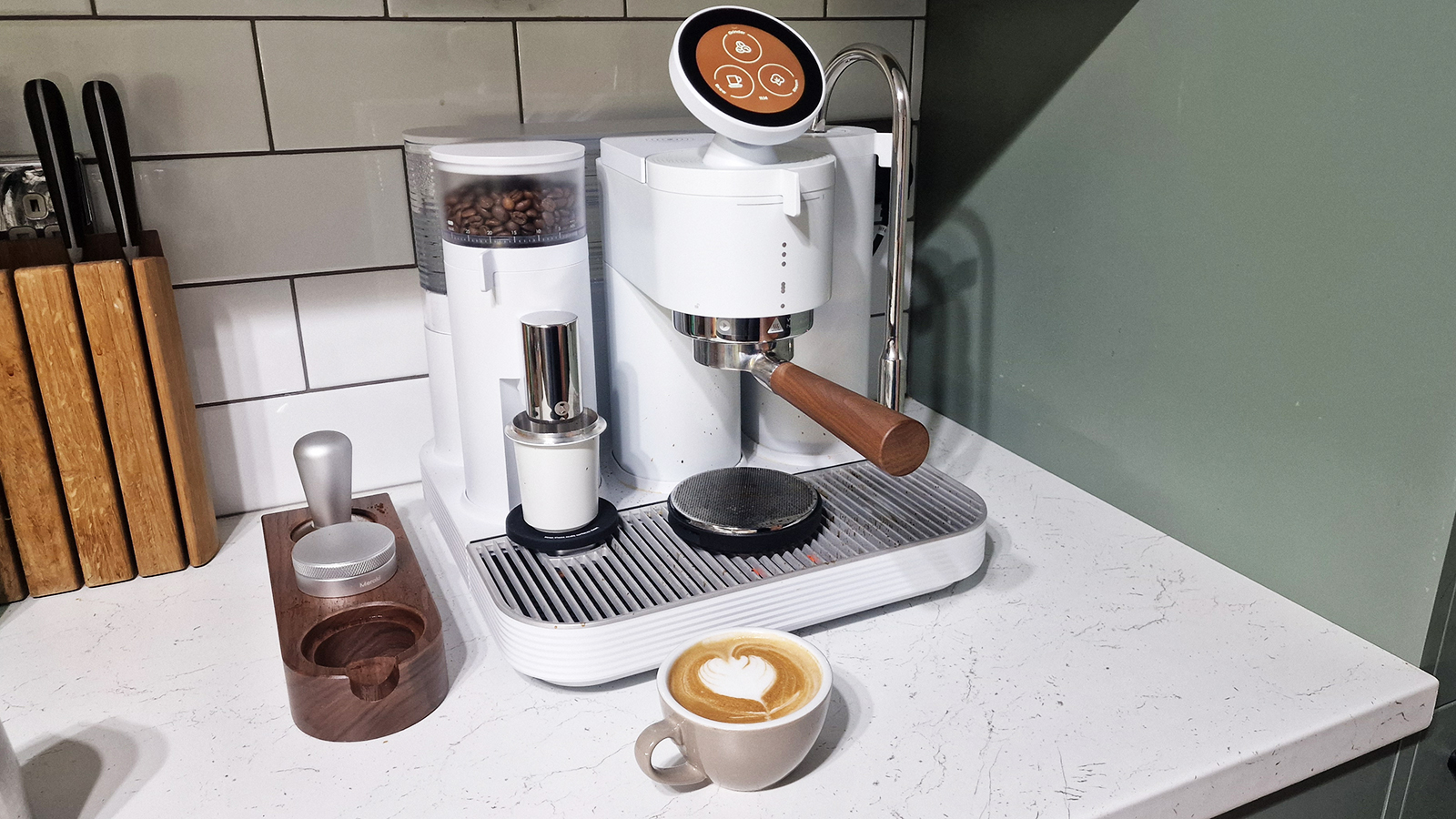
The steam wand is on a fully rotating hinge, meaning it's good for left-handed users such as myself. I could twist it in any direction, and it stays cool to touch throughout use, with only the tip getting hot.
When you're done steaming, the machine prompts you to wipe down the wand and flush it out, which you can do using a small touch icon on the screen, or using the manual steam wand lever to the side.
Here's me making a subpar latte. I've made better since, but this was my first time using the Meraki and its super powerful wand!
Cleaning the Meraki
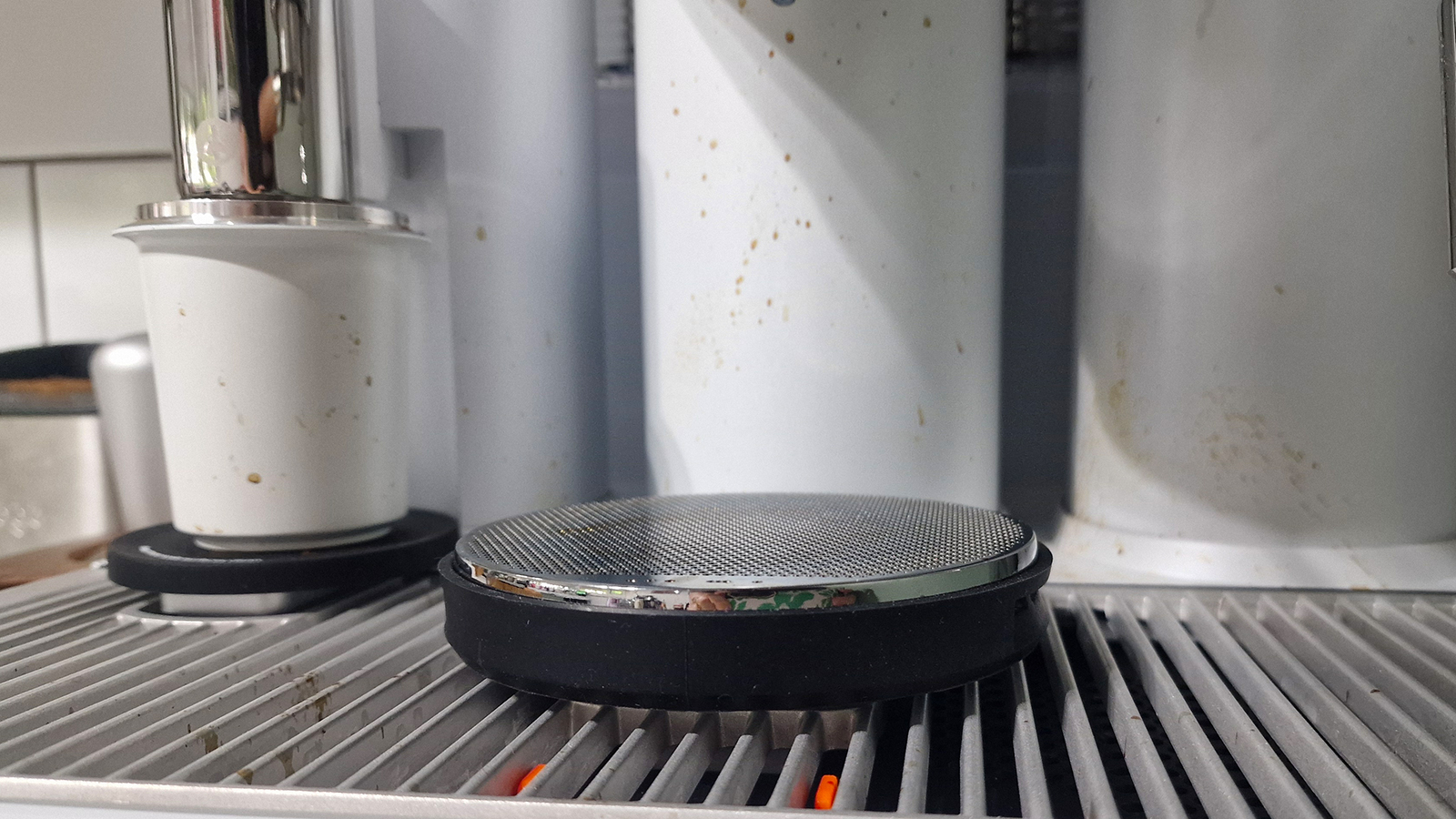
I mentioned above that I regret getting this machine in White. Here's why.
You can see above just how splattered this coffee maker gets if you're not dialed-in correctly. If my machine brews too slow, coffee splutters as it makes its way through the bottomless portafilter. Too fast? It gushes, splashing on the side of the machine.
And as you can also see, the cool curved design of this machine does pose some cleaning challenges. I can just about reach between the crevices separating the different grinding, brewing and steaming sections with a microfiber cloth, but it's too fiddly to wipe down every day.
Honestly, the splashing is my main problem with this machine. It's largely overcome by using the attachable brewing spout, but you do lose yet more clearance space underneath the group head when you use this, and it can be annoying to attach and remove it between uses when cleaning the portafilter and knocking out your coffee grounds.
The other main gripe I have with the Meraki is that it doesn't come with a water filter. At least, mine didn't. I live in an area with very limescale-rich water, which is a total coffee machine killer if you don't descale regularly and use a water filter. To compensate this, I've been descaling every few days. It's very easy thanks to the included blind basket (and you should be backflushing your machine regularly, anyway) but it would be good if Meraki could include a filter with every purchase.
How does the Meraki espresso machine compare?
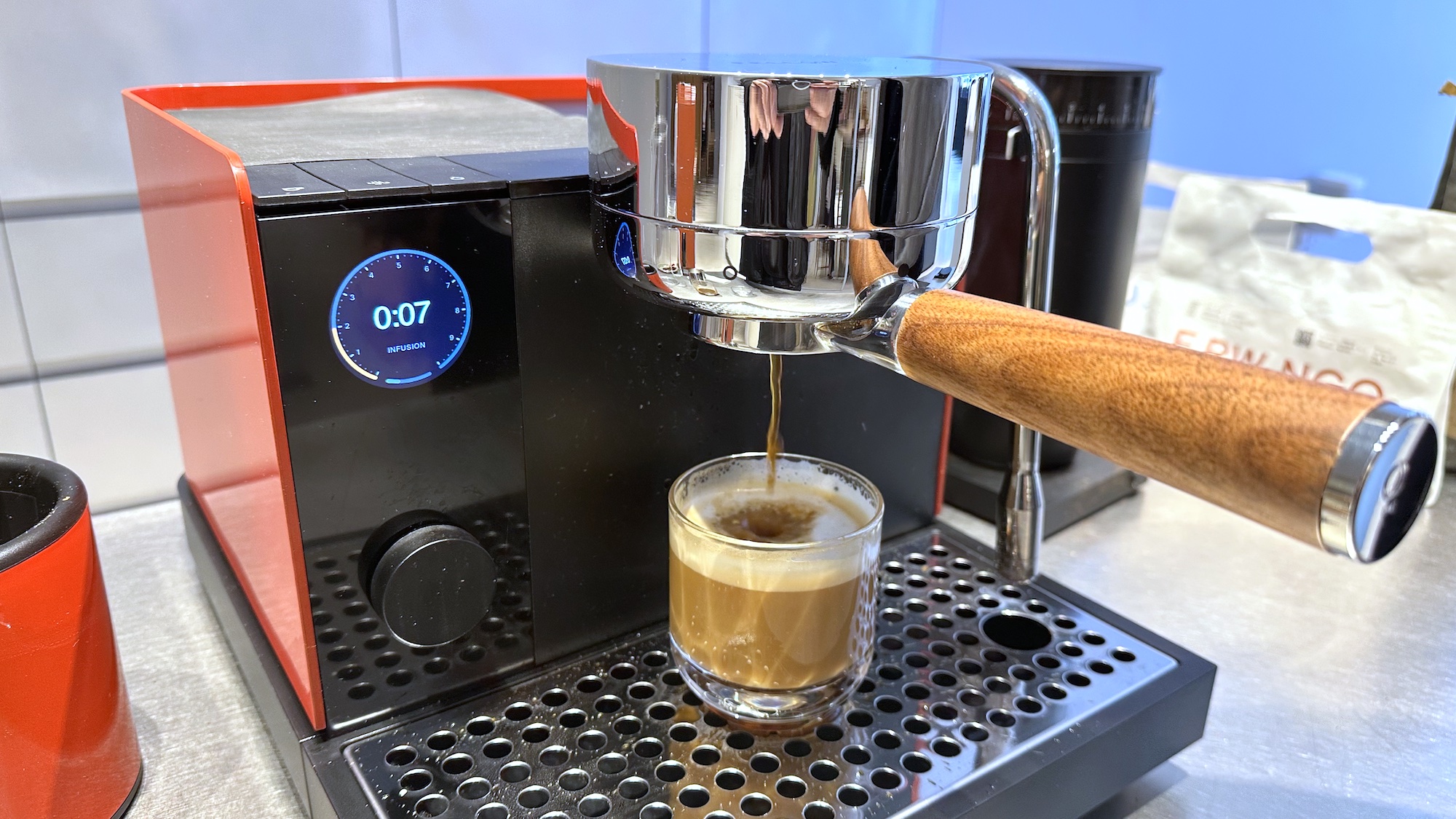
Honestly, it's hard to compare any machine to the Meraki. Its closest competitor in my mind is the hotly anticipated Fellow Espresso Series 1. It looks similar (possibly a bit easier to clean), with a comparable steam wand design. When released next year, the Fellow will cost an impressive $1,499. But crucially, it won't include a coffee grinder. So you'll need to pair it with a (likely Fellow) grinder, which will set you back around $200. All in, it's very similar in terms of price and spec, but you may feel more comfortable buying from a more established brand like Fellow. And because it's a U.S.-based brand, eventual repairs could be easier.
Fundamentally, I can't comare the Meraki and the Fellow Espresso Series 1 because I've not tried the latter in any real depth. But I loved my brief hands-on experience, so I'm confident that it'll give the Meraki a run for its money when it does eventually launch.
Meraki espresso machine review: Verdict
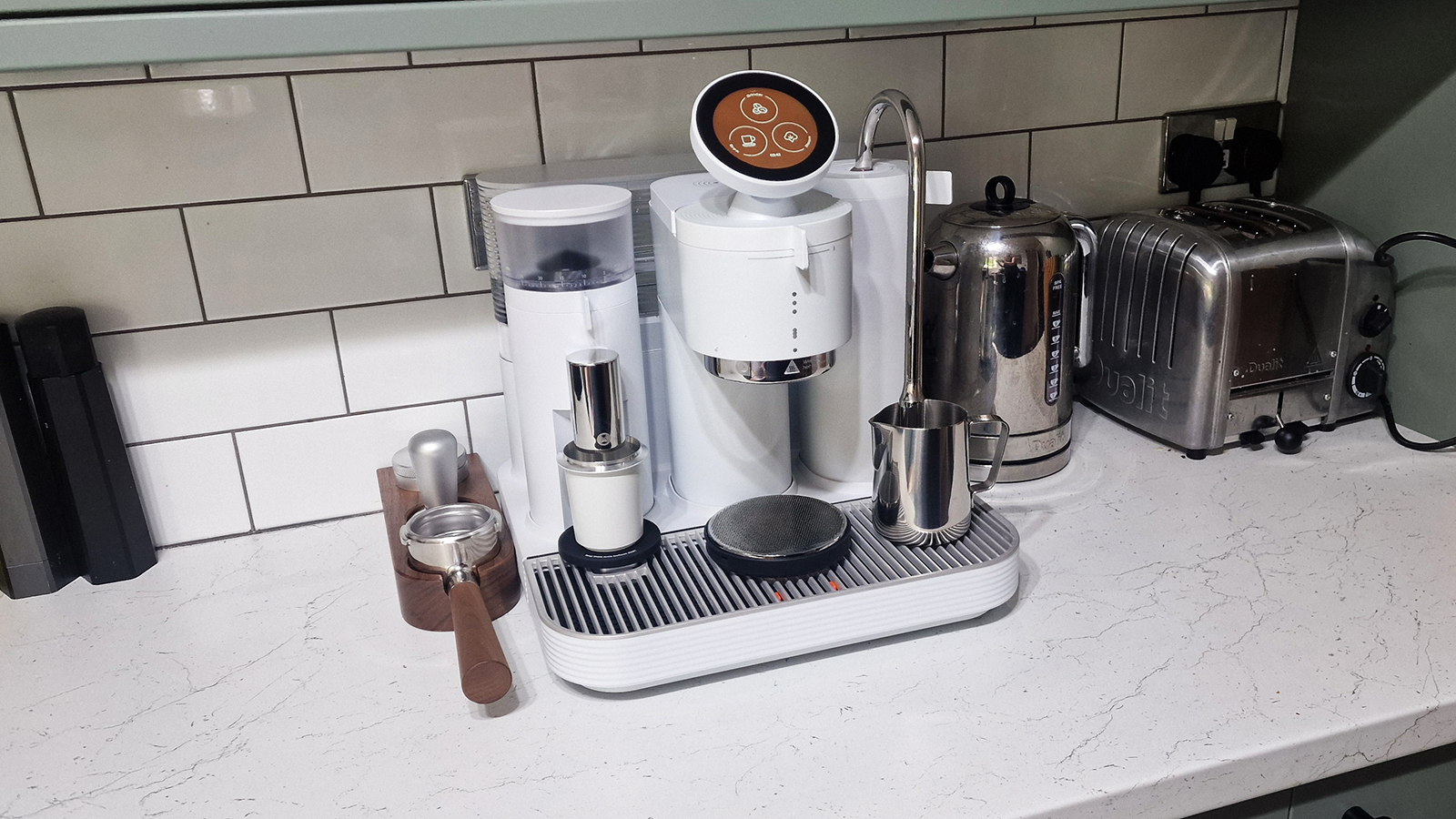
I would buy this coffee maker. My partner, once a die-hard Breville fan, is equally enamored with it. It's annoying that it needs such frequent cleaning, and due to the lack of water filter, it's generally a higher-maintenance purchase than the average consumer machine. But I think it's worth it. As a wise man by the name of Chandler Bing once said, "You are a little high maintenance, but that's ok, because I like maintaining you."
The Meraki certainly isn't for everyone. Don't think that because it's a good value buy, you'll necessarily get your money's worth. A machine like the Ninja Luxe would give you more mileage if you're looking for automated brewing and low-effort coffee. It still does require some skill to dial in beans and steam milk with the Meraki.
I'd say it's the perfect second coffee machine. If you started with a neat Breville Bambino Plus or De'Longhi Dedica and are ready to kick things into high gear, this is the machine for you.
More from Tom's Guide
- 3 telltale signs your Keurig needs descaling
- I tested out De’Longhi’s new superautomatic espresso machine, and it literally has a personality
- I just tried out the Fellow Espresso Series 1, and now I need to make space in my kitchen

Millie is the Managing Editor of Homes at Tom's Guide. She's been reviewing home tech for over five years, testing everything from coffee makers to the latest vacuum cleaners.
With particular expertise in cookware and kitchen appliances, you'll struggle to find an air fryer Millie hasn't tested. She's traveled the world reporting on the latest home innovations and product launches, learning how to use pizza ovens from Pizzaiolos in Naples, and touring the De'Longhi factory in Venice. Millie is also an SCA-Certified barista.
When she's not reporting on home and appliance trends, Millie loves watching live music. She's currently learning the guitar - naturally, she plays a Fender.
You must confirm your public display name before commenting
Please logout and then login again, you will then be prompted to enter your display name.
